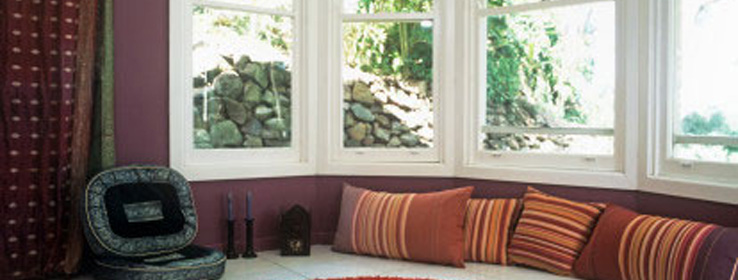Help your color-shy clients break out of their color comfort zone.
Designers and color consultants often encounter color-shy clients – those afraid to break out of their color comfort zone. For homeowners who need that extra dose of encouragement to enrich their spaces with bolder paint, consider these tips and techniques.
Provide visual aids.
"The best way to get someone out of the safe zone is to create a visual," says Martha O'Hara of Martha O'Hara Interiors in Hopkins, Minn. "We may show them rooms in our portfolio, in magazines or other pictures where strong color is used. From there we see if they like the whole room with the color."
Pam Sather, a color consultant in Jacksonville, Fla., adds, "People should take paint swatches home and lay them on existing furniture, pillows or upholstery." By doing so, clients can begin to visualize how a painted wall, for example, will complement the rest of the furnishings and accessories in a room.
Such a technique also tempers the potential pitfalls of clients relying solely on small swatches or color decks for their decisions. "They're fanning out the color deck and picking their favorite color," Sather says. "It may look pretty on the one-inch square, but on the wall it will intensify."
Start small.
"If someone says to me, 'I would really like to do a warm coppery brown but I'm kind of scared,' I suggest trying those spots that are more isolated, such as the bathroom," Sather says. "It has a clear starting and stopping point."
Kitchens are also a great place for clients to test the color boundaries. "In the kitchen, you have more cabinets than true wall space," O'Hara says. "It's a great place to use small bits of color." The same goes for rooms with lots of windows. "These are good low-risk rooms to use strong color, because that color will get stronger and stronger as you take windows and cabinets away," she adds. "Color has a smaller impact in these types of rooms."
Ask a lot of questions.
When entering a neutral-toned room, O'Hara will ask if it's beige because that's what the client prefers, or if it's because that person is afraid to do anything else. "Some clients could be happy forever in a cream room. It's not necessarily a bad thing if that's what they truly prefer," she says. "Then there are others who live that way because they don't have the confidence to put their favorite colors into a space. Those are the ones who are color-shy, and we need to get them to take a little more risk."
In those instances, O'Hara and her team of eight designers will use their portfolios or magazine pictures for guidance. "We ask homeowners to critique or comment on the rooms they like or don't like," O'Hara says. "If three times in a row they say that the brightest rooms are not for them, we pretty much get it."
Of course, there's always the psychology of color to consider. Says O'Hara, "We'll ask many times, 'What do you do in this room? How would you like to feel when you walk into this room?'"
Help clients understand the big picture.
If a homeowner is already somewhat gun-shy about using color, seeing an empty room with only a bold hue on the wall may cause additional anxiety. "We continually tell clients, 'Don't get nervous when the paint goes into a space without furniture, because remember, more color is to follow,'" O'Hara says. "There will be neutrals and other colors built on top of that wall color."
If at first you don't succeed, try again.
No designer wants to encourage a client to paint and repaint until he or she gets it right, but if a homeowner is unsatisfied, a paint redux is one of the easiest fixes in interior design. "This is the best place to take the risk because it is so reversible," O'Hara says. "You can get more color by putting paint on the walls for the least cost of almost anything you do." Sather agrees: "Paint color is a big deal, but the key thing to realize is that it is only paint. It can be redone."







